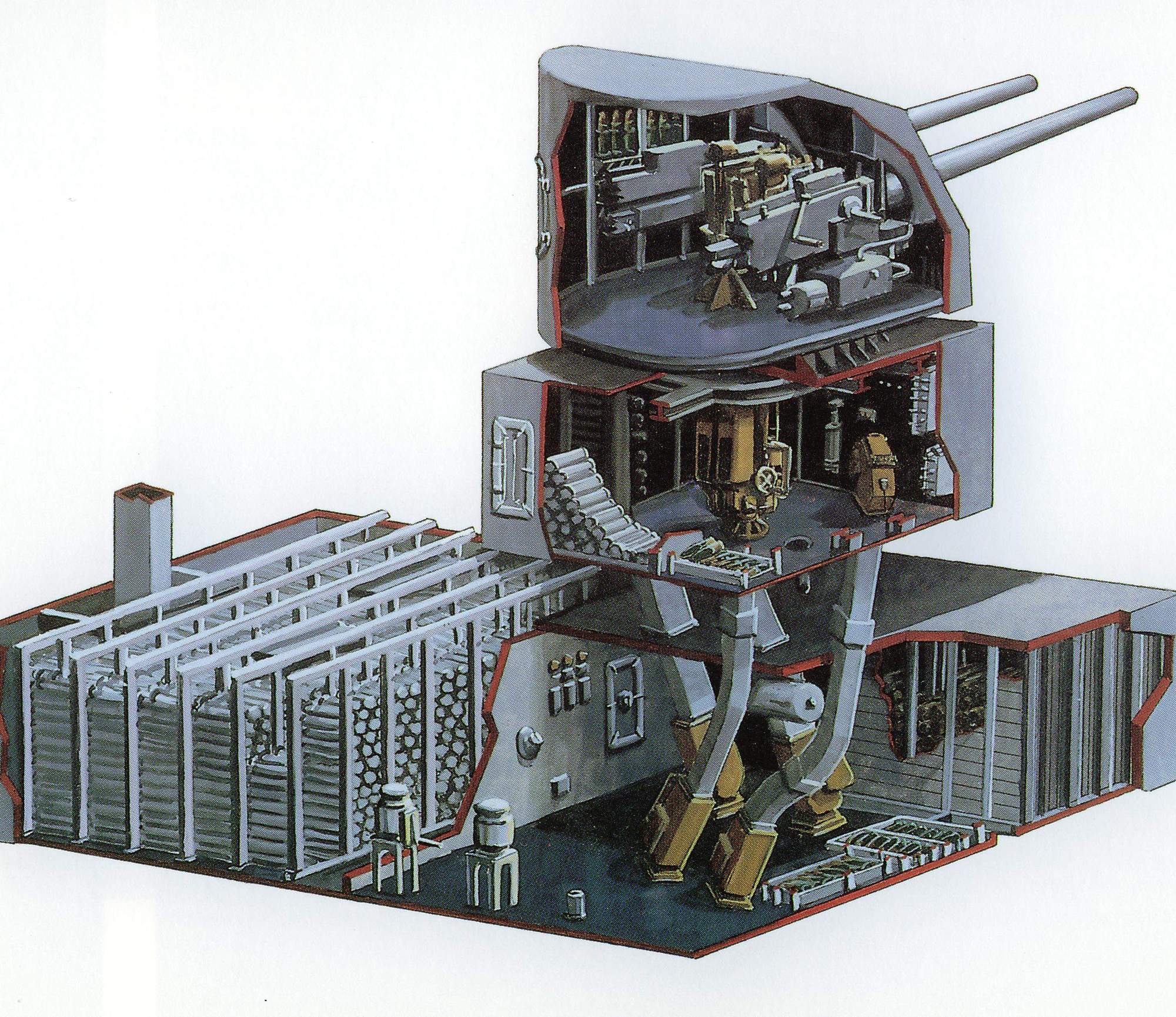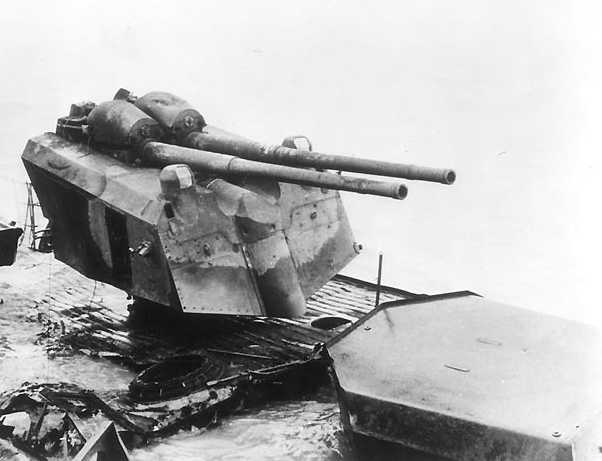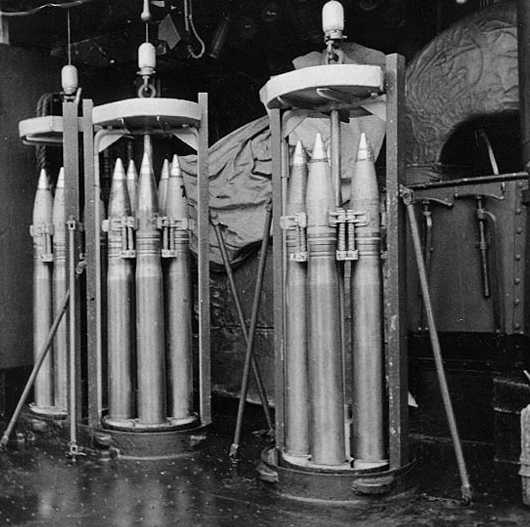Oh radar, how magical you are.
Lets go to gunnery basics
if you want to hit a target,
1) you need to know that it exists - detection/search
2) you need to know how far away it is from you - ranging and bearing
3) you need to know where the target is trying to move to so you can predict its path and check the flight path.
4) you need to know which way you are going so you can compensate your firing solution for your own movement.
Radar is a double edge sword, active radars helps detect enemy ships while they also get picked up with radar warning devices.
So lets look at Tirptiz, she is equipped with a FuMO81 Berlin, FuMO63 Hohentwiel K, FuMO 213, FuMO 26 and FuMB 6
FuMO63 Hohentwiel K is a surface search set for 20-60 km
FuMO81 Berlin is a centimeter search set for 20-30 km
FuMO 213 is a AA gunnery set with a 40-60km range, 35 m accuracy, and a bearing accuracy of 1.15 degrees.
FuMO 26 is a surface gun laying set wutg a 20-25 km range, 70m accuracy and a bearing accuracy of 0.25 deg
FuMB 6 is a passive warning set.
The Iowa had a Mark8 and SL/SO/SK
Mark 8 main battery fire director 37 km, 0.11 deg bearing accuracy and range accuracy to 5m
SL surface search to 39 km
SO air and surface search to 65 km air, 29 km surface
SK air search to 300 km.
US radar is simply better.
Knowing where the enemy is, does not mean that you can predict where the enemy will go. It also doesn't mean that your guns can hit it.
Iowa during test shoots off Crete in 1987 fired from 34k yards (32km), for a dispersion of ~200m (0.64% of range) and time to target was around 50-60 seconds. it is to a point where accuracy doesn't really matter, it is a statistics hit ratio game at that point.
Bismark gun data at the proving grounds was about 0.5-0.8% of the range.
Thus my perspective is, US radar is very good, German optics is very good. Both had very good electromechanical calculators.
The radar warning device will pick up the other's radar and warn of impeding danger.
Iowa should get target lock quicker and start firing faster. but in an ideal case where both is fully functional, both should see each other coming when they are within firing range.
Away from plunging fire range, broadside range, the German radars have sufficient resolution for accurate gun lay.
Lets go to gunnery basics
if you want to hit a target,
1) you need to know that it exists - detection/search
2) you need to know how far away it is from you - ranging and bearing
3) you need to know where the target is trying to move to so you can predict its path and check the flight path.
4) you need to know which way you are going so you can compensate your firing solution for your own movement.
Radar is a double edge sword, active radars helps detect enemy ships while they also get picked up with radar warning devices.
So lets look at Tirptiz, she is equipped with a FuMO81 Berlin, FuMO63 Hohentwiel K, FuMO 213, FuMO 26 and FuMB 6
FuMO63 Hohentwiel K is a surface search set for 20-60 km
FuMO81 Berlin is a centimeter search set for 20-30 km
FuMO 213 is a AA gunnery set with a 40-60km range, 35 m accuracy, and a bearing accuracy of 1.15 degrees.
FuMO 26 is a surface gun laying set wutg a 20-25 km range, 70m accuracy and a bearing accuracy of 0.25 deg
FuMB 6 is a passive warning set.
The Iowa had a Mark8 and SL/SO/SK
Mark 8 main battery fire director 37 km, 0.11 deg bearing accuracy and range accuracy to 5m
SL surface search to 39 km
SO air and surface search to 65 km air, 29 km surface
SK air search to 300 km.
US radar is simply better.
Knowing where the enemy is, does not mean that you can predict where the enemy will go. It also doesn't mean that your guns can hit it.
Iowa during test shoots off Crete in 1987 fired from 34k yards (32km), for a dispersion of ~200m (0.64% of range) and time to target was around 50-60 seconds. it is to a point where accuracy doesn't really matter, it is a statistics hit ratio game at that point.
Bismark gun data at the proving grounds was about 0.5-0.8% of the range.
Thus my perspective is, US radar is very good, German optics is very good. Both had very good electromechanical calculators.
The radar warning device will pick up the other's radar and warn of impeding danger.
Iowa should get target lock quicker and start firing faster. but in an ideal case where both is fully functional, both should see each other coming when they are within firing range.
Away from plunging fire range, broadside range, the German radars have sufficient resolution for accurate gun lay.




